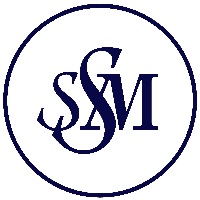Requirement to Apply to South African Maritime Safety Authority for Notification of Incident or Stoppage
Club correspondents in South Africa P&I Associates have sent the attached Marine Notice no 13 of 2017 issued by The South African Maritime Safety Authority (SAMSA) issued 27/6/17 which has immediate effect.
The Marine Notice relates to all vessels requiring a place of refuge in South Africa for repairs following an incident on board.
P&I Associates tell us:
Q U O T E
South Africa has always adopted a positive approach when it comes to vessels that have been immobilized due to an incident on board or vessels that have had to stop or anchor in order to carry out repairs provided the owner of the vessel makes a prompt application to SAMSA providing full disclosure behind the purpose of the stop. There are several safe anchorages along the South African coast where one can lay-up a vessel depending on the wind and swell which is seasonal. This was set out in Marine Notice no 10 of 2016.
Unfortunately, a number of vessels close to the South African coast failed to comply with Marine Notice no 10 of 2016 with regard to reporting of the incident. Marine Notice 13 of 2017 now provides that “any person” receiving information regarding a vessel that may require assistance in any form with respect to seaworthiness or safety or a potential similar situation to report this to MRCC.
The notice is a little vague with regard to definitions but “any person” we would take to mean a ships agent, ship repairer, P&I correspondent, surveyor, salvor, lawyer and insurer (P&I Club, H&M Insurer).
As soon as the passage plan changes and something happens to compromise the vessel’s seaworthiness, the master must supply the following information to SAMSA via MRCC:
1. Name and Port Of Registry;
2. IMO Number;
3. Dimensions including draft;
4. Nature of reason the vessel requires entry;
5. Requested assistance/permission;
6. Plan of action;
7. Class Society;
8. P&I Club;
9. Hull and Machinery Insurers;
10. Number of crew on-board (crew list);
11. Cargo type/quantity and distribution on board;
12. Quantity/type of Bunkers and other pollutants on-board;
13. Contact details of owner/operator/manager and agent;
14. Master’s contact details, email, Sat C;
15. Last 6 Port State Control Inspection reports;
16. List of certificates with dates of expiry;
17. Owners nominated Agents;
18. Notification of ISPS application/clearance;
19. Last port of call/loading and next port of call/discharge.
Therefore, as soon as something takes place on board the vessel (an incident) which may compromise the vessels seaworthiness, then the incident must be reported to SAMSA. You will note that on receipt of this information, SAMSA may put a surveyor on board the vessel to investigate the nature and extent of the problem/incident.
If they feel that there is any threat of pollution they will require that a SAMSA approved salvage tug will be required to stand off or be connected or to escort the vessel through the South African Exclusive Economic Zone. They have not defined what a SAMSA approved salvage tug is but we believe this to be a tug of sufficient bollard pull required in order to keep the vessel from closing the coast.
P&I Associates also attached MN 10 of 2016.pdf as a reminder which sets out the requirements for SAMSA when Owners are seeking permission for a port or place of refuge.
U N Q U O T E
For further information, please speak to your usual Club contact. Additional information will be published when it becomes available.


